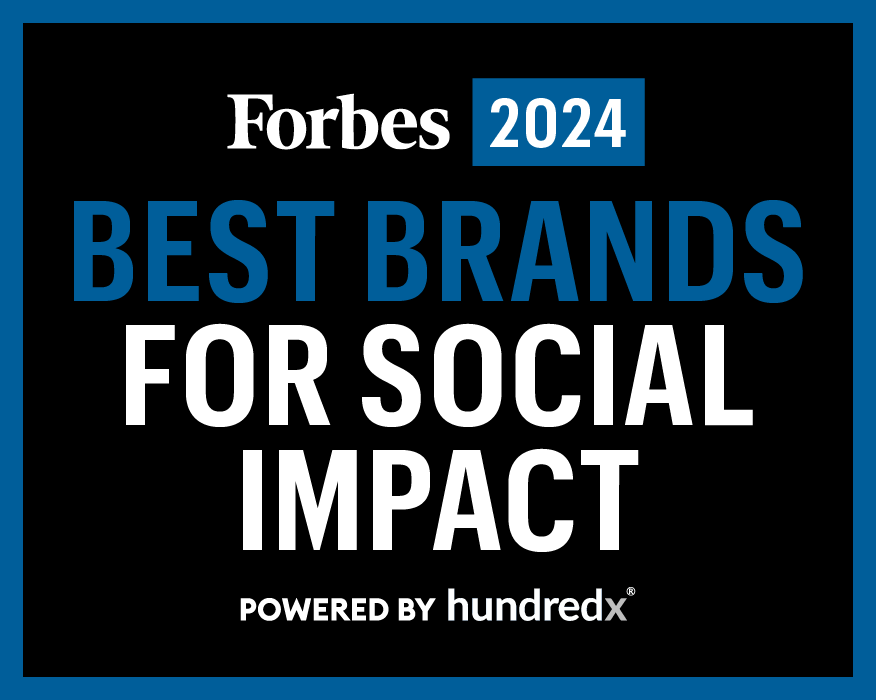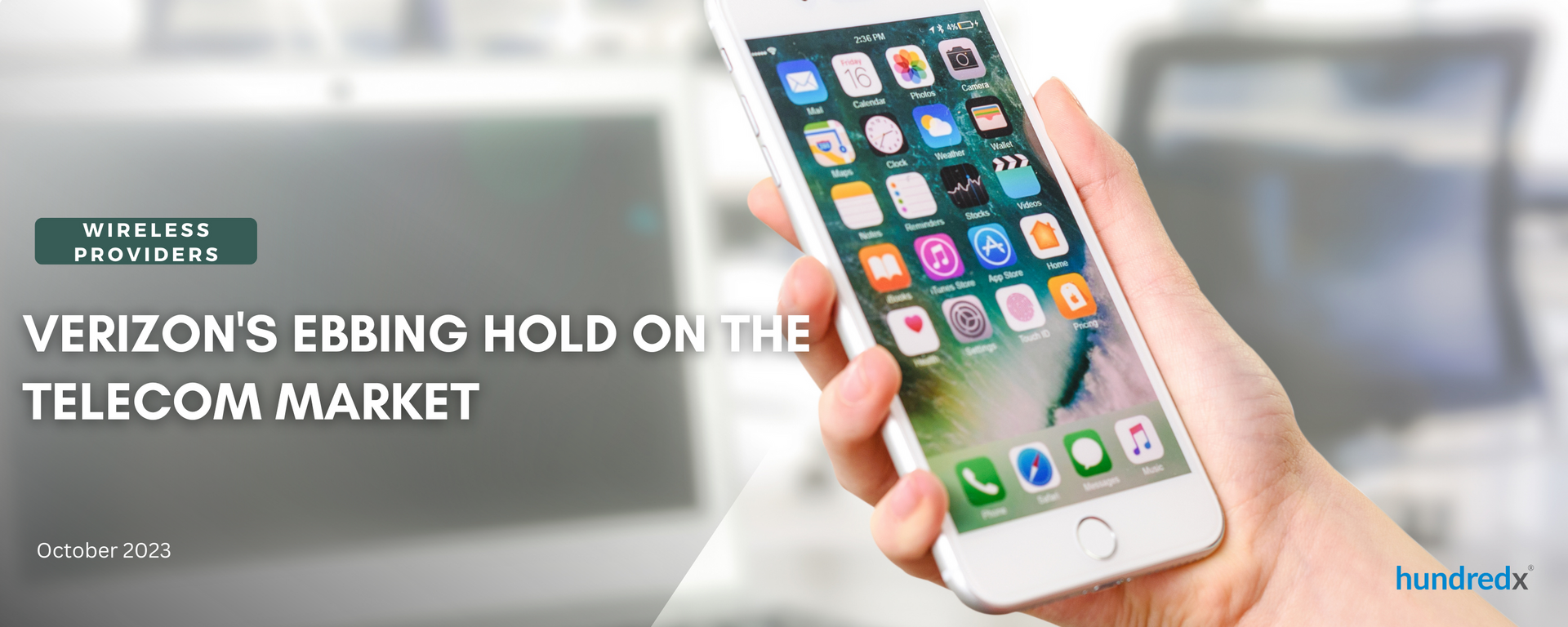
Recent strength in feedback from “the Crowd” of real AT&T customers, in comparison to the other Big Two mobile carriers, aligned with AT&T better-than-expected earnings report on October 19th. HundredX data also indicates weakening Loyalty Intent1,2 in Verizon and growing strength in T-Mobile, which should result in share continuing to shift away from Verizon towards AT&T and T-Mobile into 2024.
Our data affirms a generally consensus view across the industry, which is Verizon is going to continue losing ground to AT&T and T-Mobile over the next 6-12 months, which are undercutting Verizon on price while offering increasingly robust coverage and speeds. We’ve found AT&T in particular is pulling Gen-Z and millennial customers away from Verizon.
Analyzing more than 70,000 pieces of feedback from wireless customers, September 2022 through September 2023, we found:
- Verizon’s Loyalty Intent fell 6% in the last three months, while T-Mobile and AT&T gained 4% and 3% respectively.
- Customers continue to view Verizon as best-in-class for network speed, coverage, and quality, but AT&T is starting to catch up, with customer perception³ towards these factors increasing.
- 5G has jumped in importance as networks expand and more people get 5G phones. T-Mobile is the leader in perception towards 5G, followed by AT&T and then Verizon. 5G is now selected 8th out of 16 drivers of satisfaction we track, up from 16th two years ago.
- Once viewed as the middle ground between Verizon’s network quality and T-Mobile’s affordable prices, AT&T is particularly gaining ground with Gen-Z and millennial customers. Over the past few months, Loyalty Intent for young adults rose 8% for AT&T, while falling 10% for Verizon.
- At the same time, perception toward AT&T’s price, 5G, speed, and coverage improved significantly for young adults.
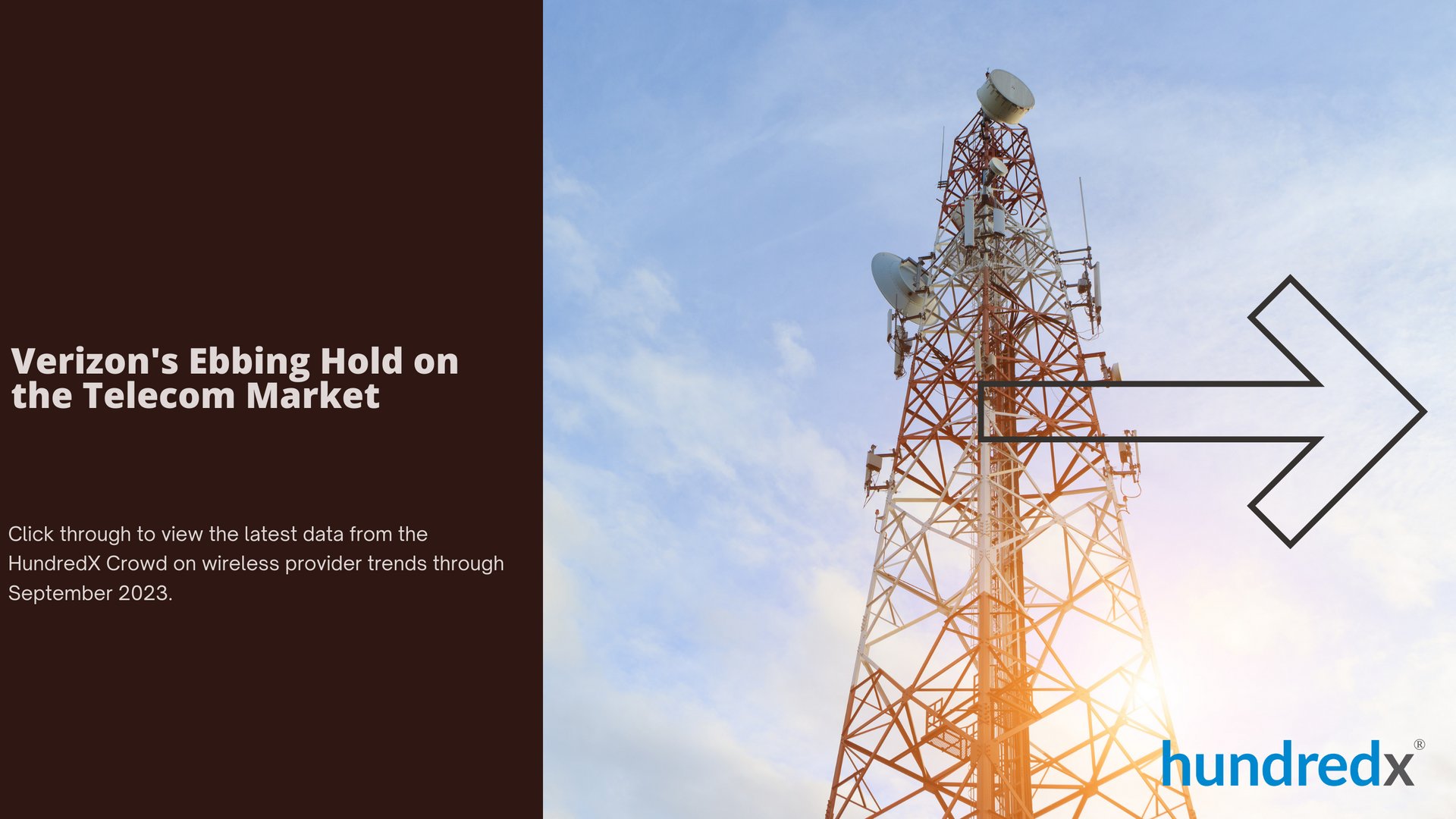
Slide title
Write your caption hereButton-
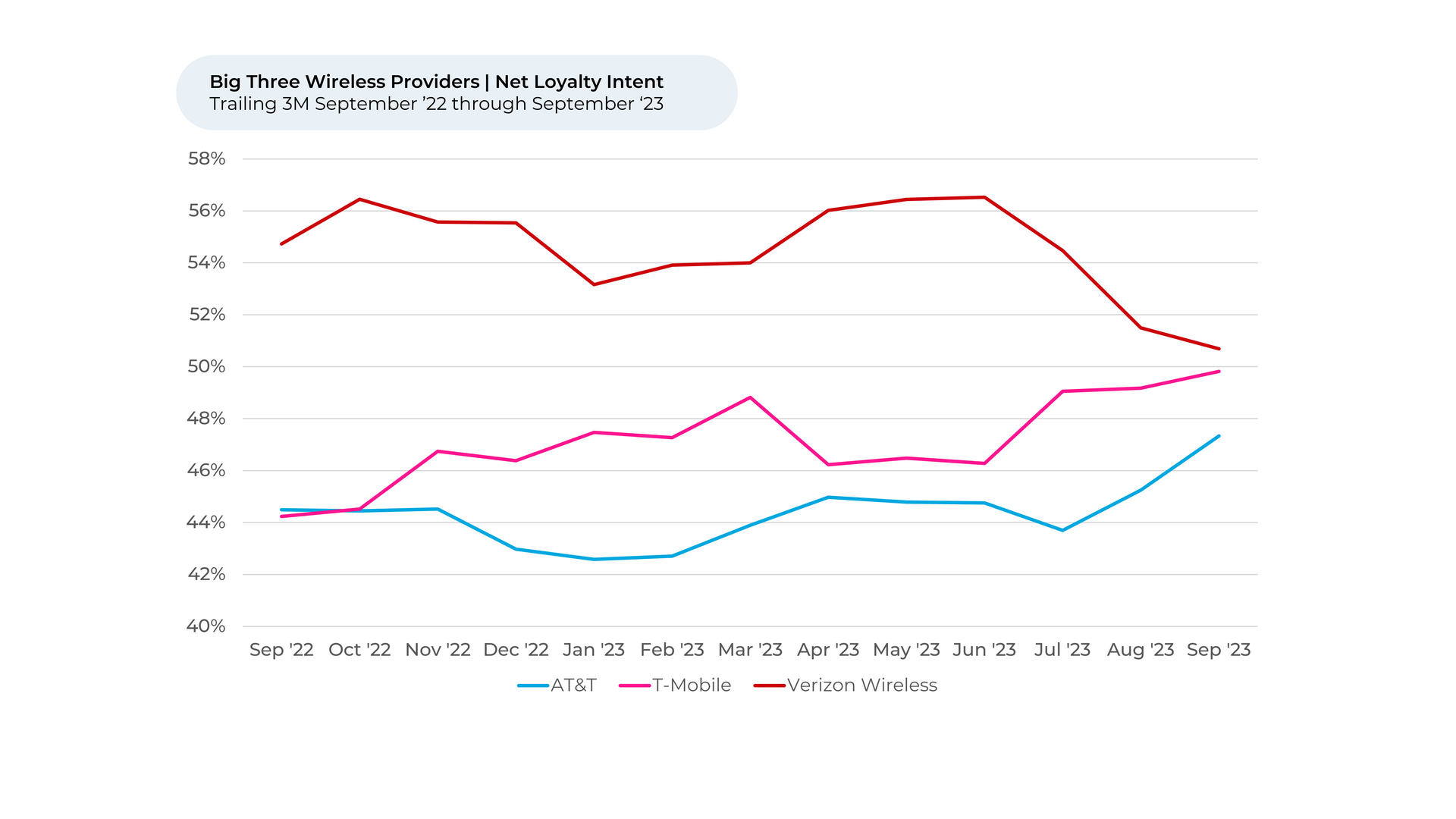
Slide title
While it still comes out on top, Verizon is losing customer loyalty to AT&T and T-Mobile.
Over the past three months, Loyalty Intent dipped 6% for Verizon while increasing 4% for
T-Mobile and 3% for AT&T.
Button 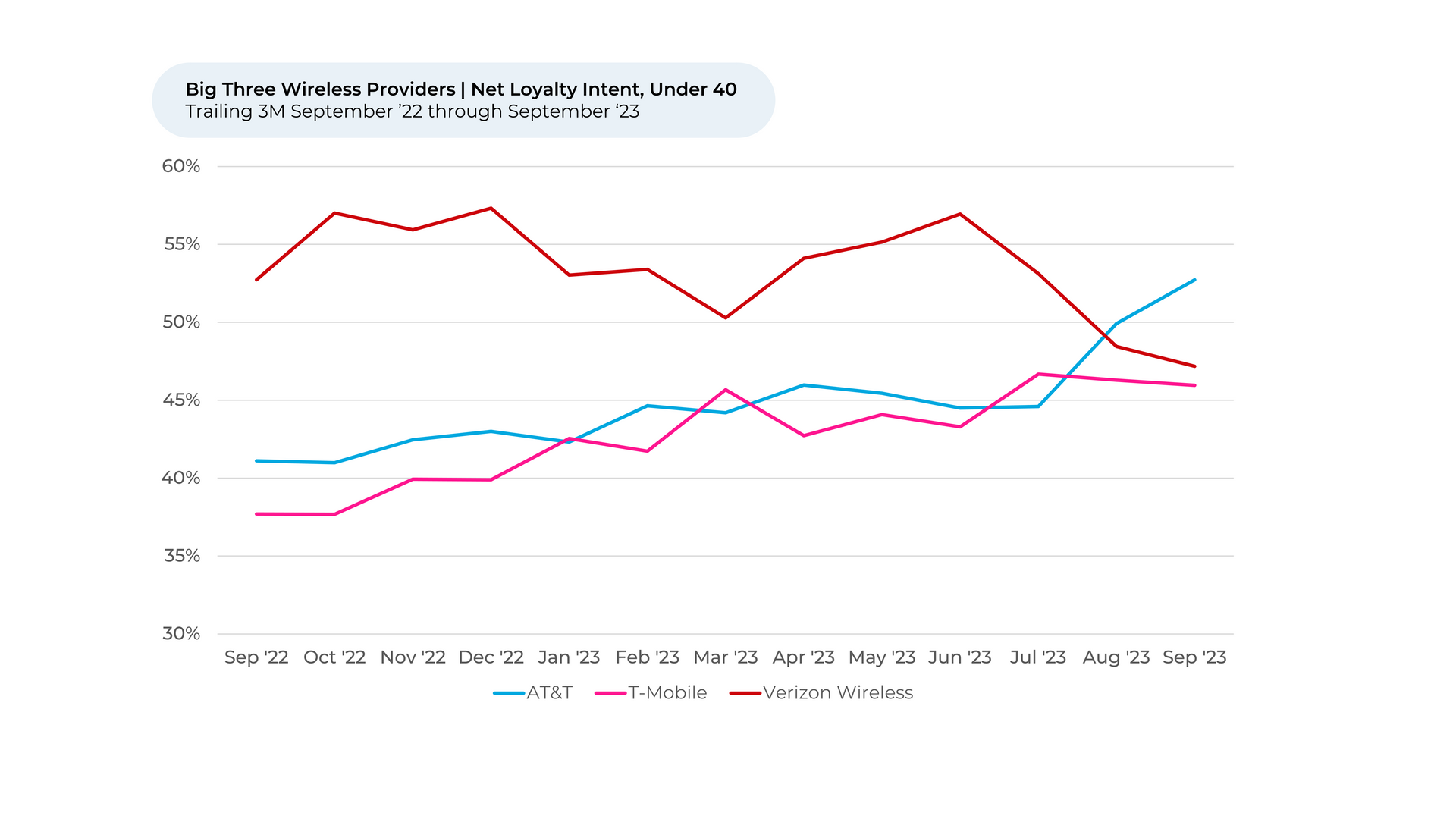
Slide title
Verizon is especially losing loyalty among Gen-Z and millennial customers. Over the last
three months, Loyalty Intent among under-40-year-olds fell 10% for Verizon. It rose 3% for
T-Mobile while jumping 8% for AT&T. Among young adults, AT&T now has the highest
Loyalty Intent.
Button
Slide title
While Verizon is still viewed as best-in-class for its coverage area, AT&T is closing the gap.
Customer perception toward coverage area fell 6% for Verizon over the past three months,
while AT&T gained 1%.
Button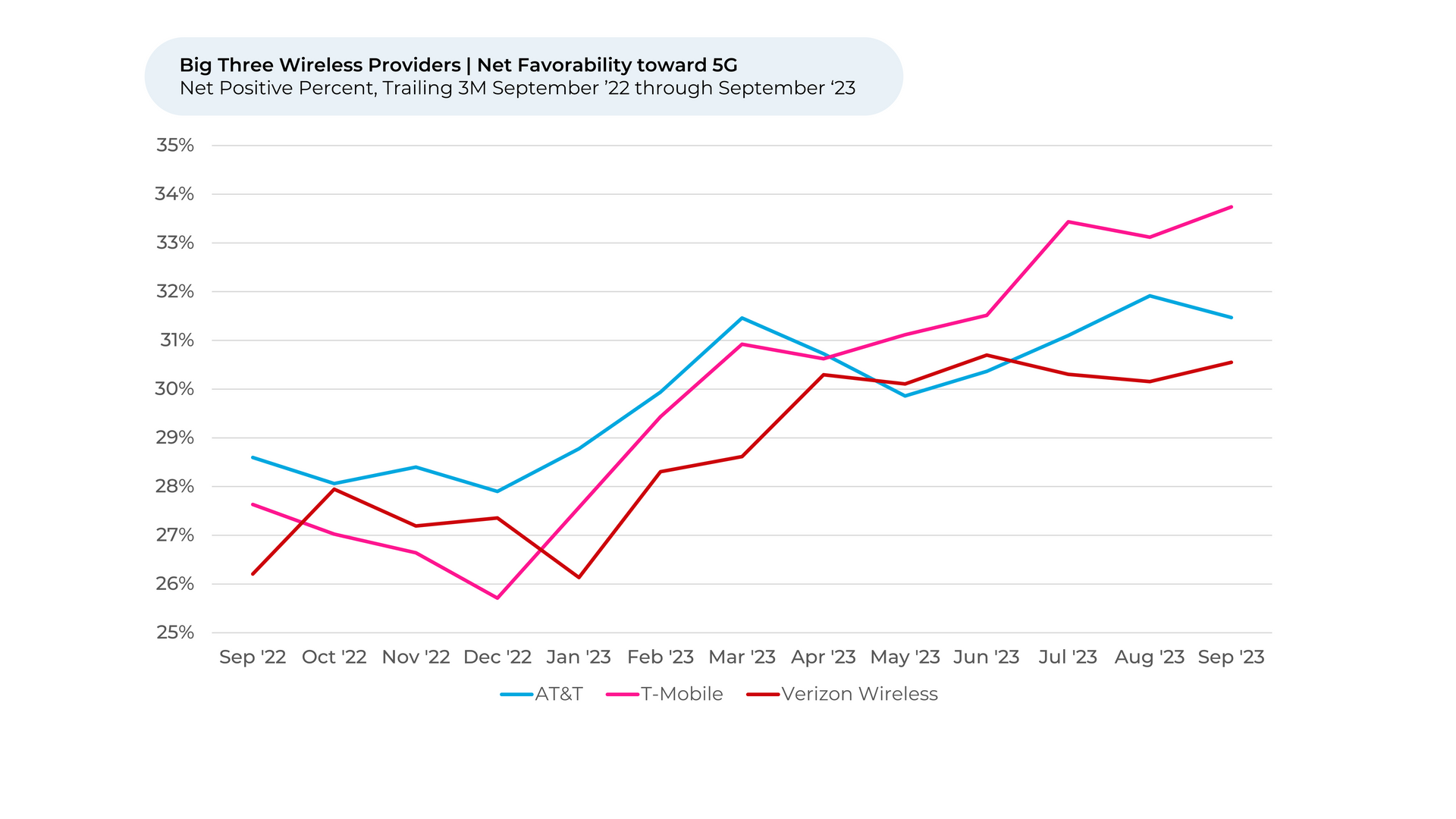
Slide title
Customer are happiest with T-Mobile’s 5G, after T-Mobile surpassed Verizon and AT&T
earlier this year. Verizon now lags both its biggest competitors.
Button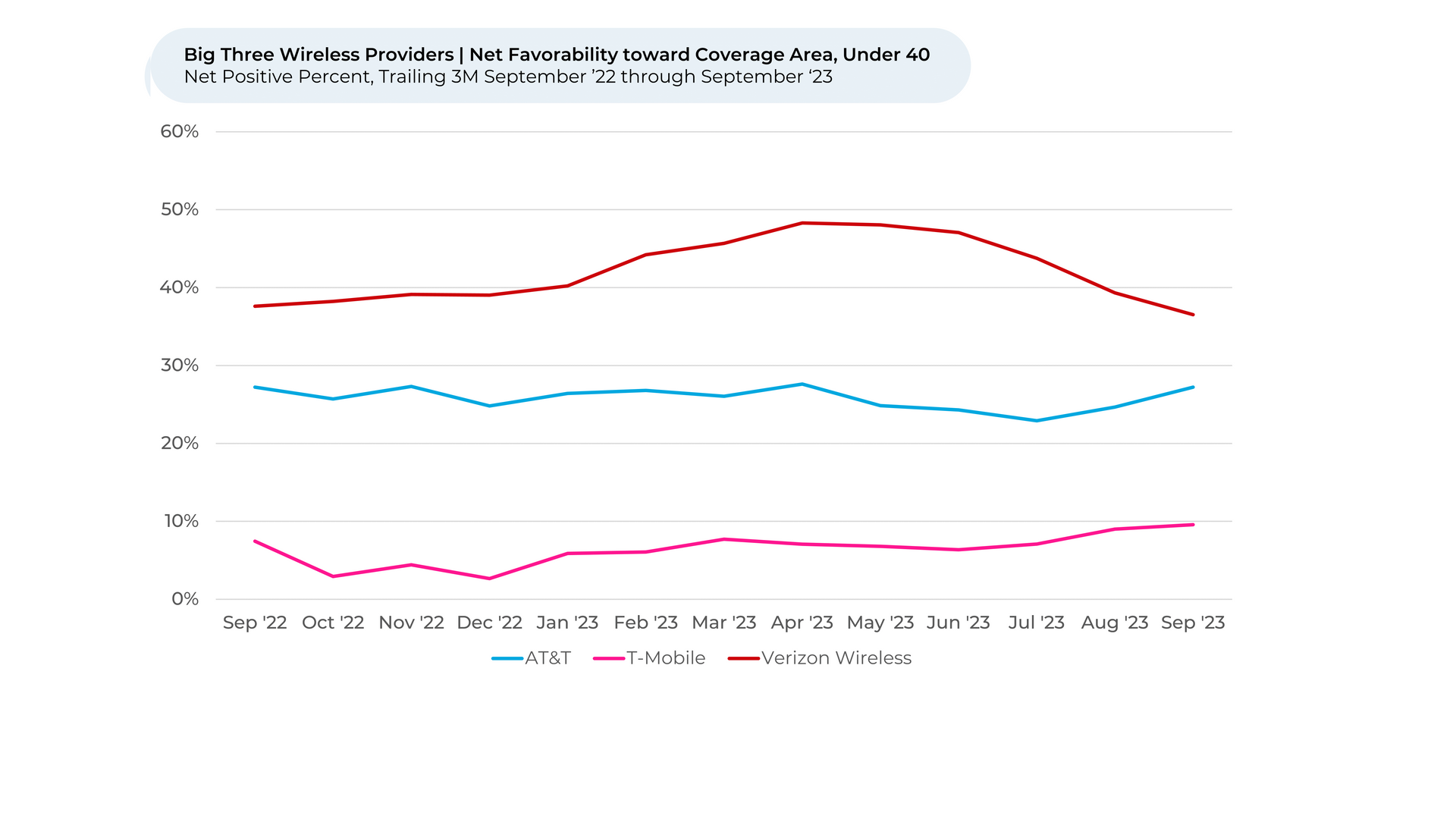
Slide title
The shift in perception toward coverage area is even more pronounced with customers
under 40. Perception fell 11% over the past three months for Verizon, while growing 3% for
AT&T.
Button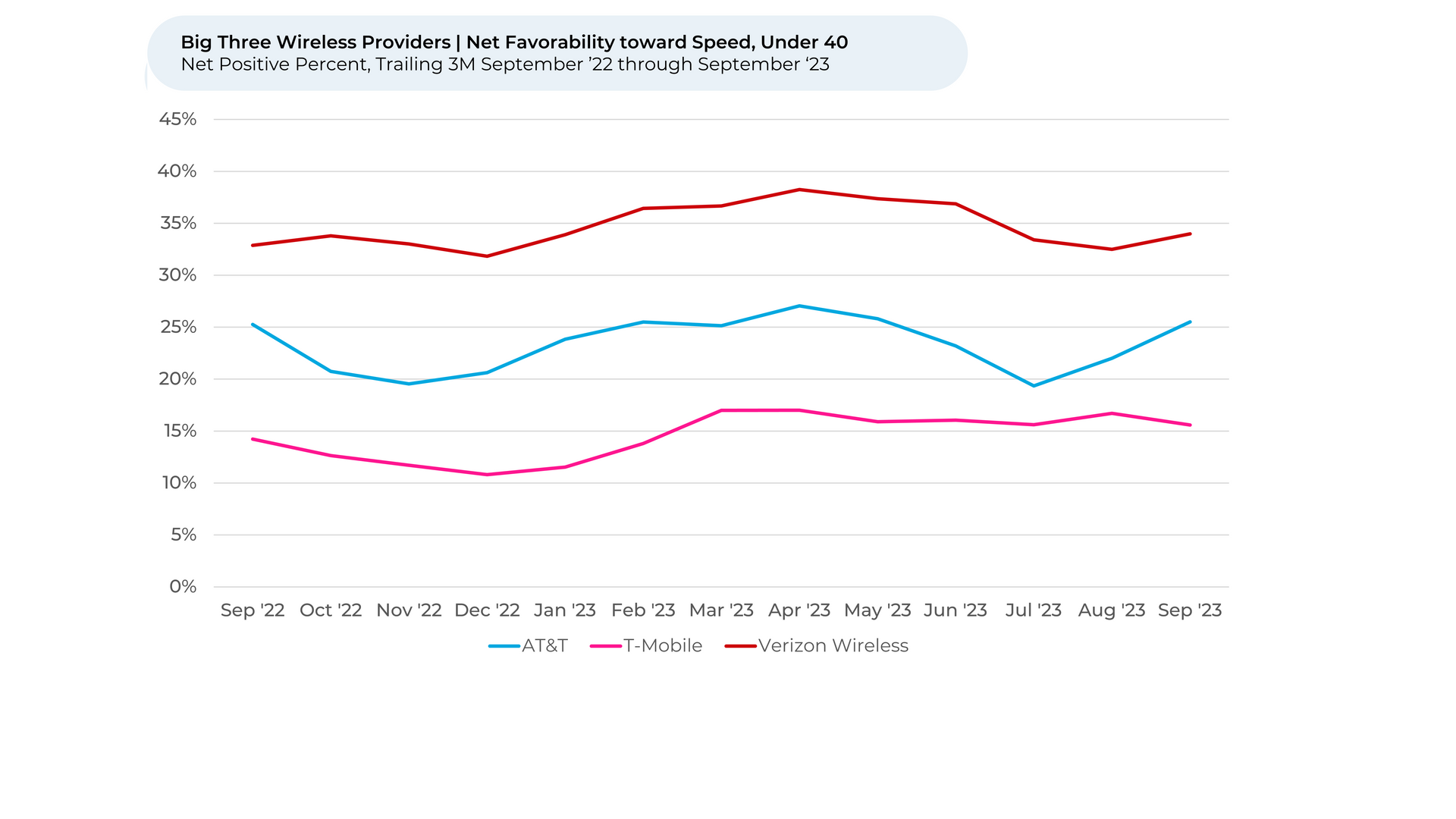
Slide title
Young adults also feel better about AT&T’s network speeds. Over the past three months,
perception toward AT&T’s speed grew 2%, while staying stable for T-Mobile and falling 3%
for Verizon.
Button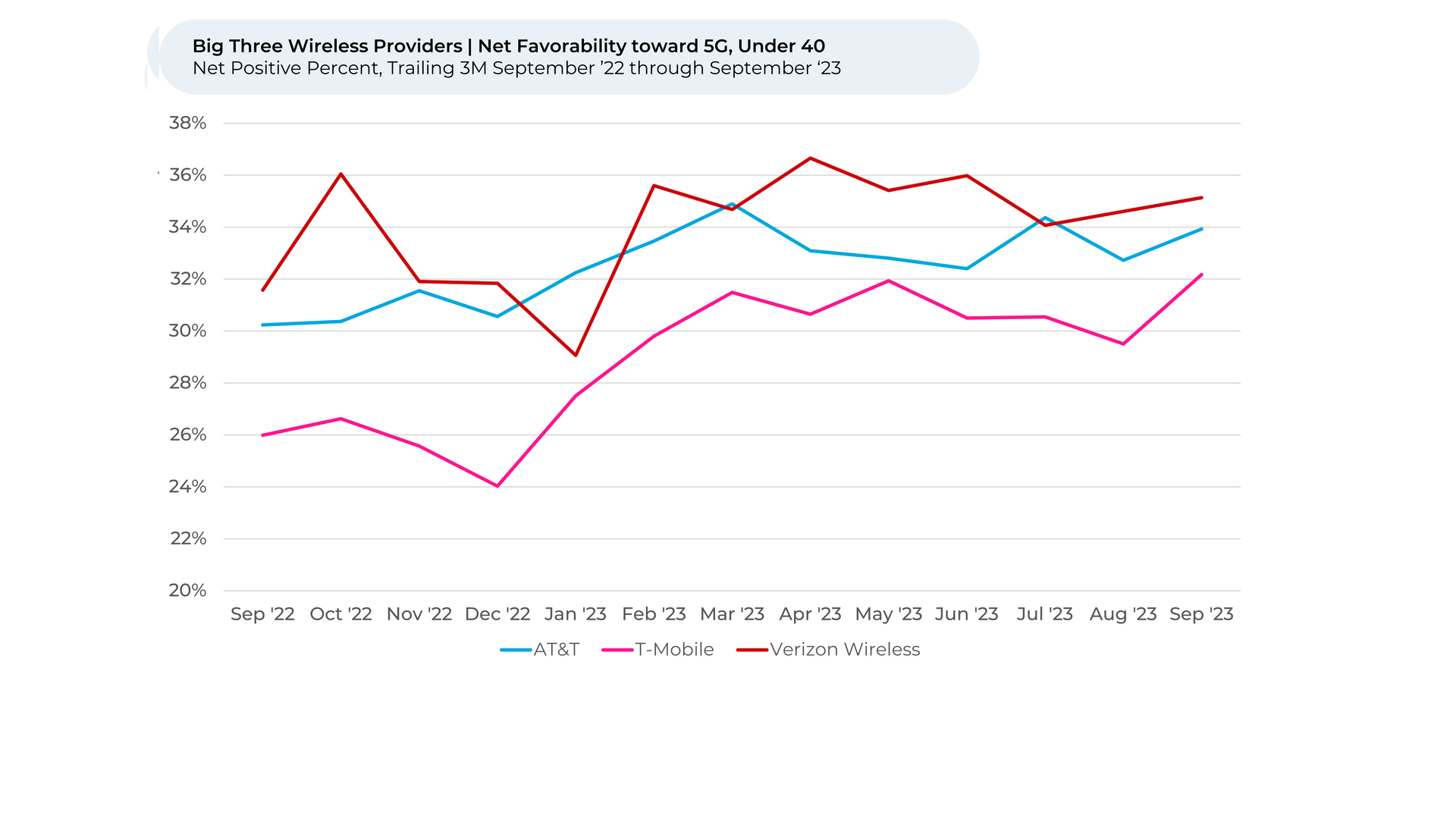
Slide title
AT&T is neck and neck with Verizon on 5G, although T-Mobile is catching up. Young adults’
perception toward 5G dipped slightly for Verizon over the past three months, while rising
2% each for T-Mobile and AT&T.
Button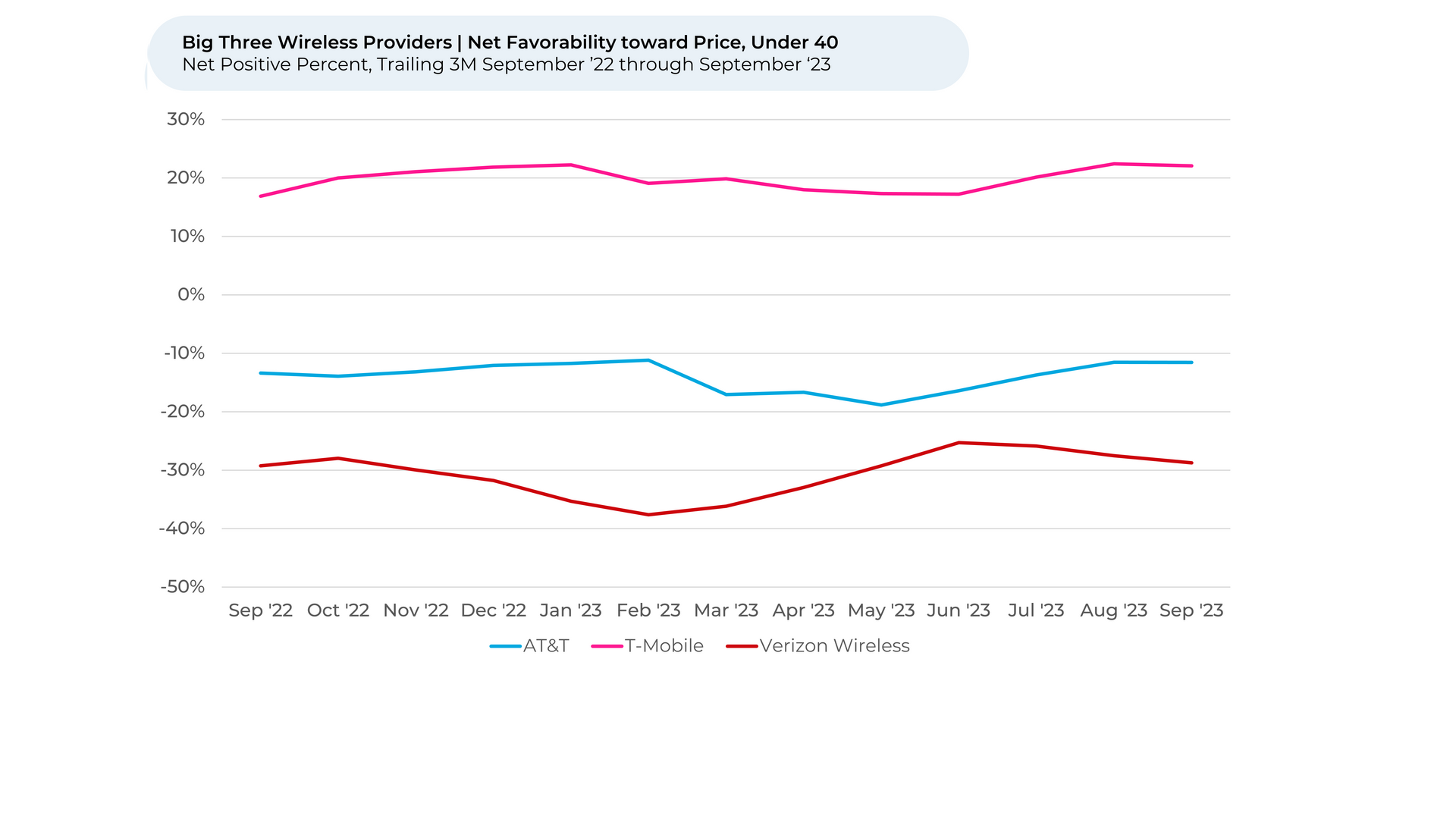
Slide title
Young adults felt happier about AT&T prices in recent months, with perception toward
price increasing 5% since June. While AT&T still lags behind T-Mobile, it widened its lead
over Verizon, which fell 3% since June. Interestingly, older adults felt unhappier about
AT&T’s price, coinciding with AT&T’s price hikes to legacy plans.
Button
Please contact our team for a deeper look at HundredX's wireless provider data, which includes more than 180,000 pieces of customer feedback across 20 brands.
- All metrics presented, including Net Loyalty Intent (Loyalty Intent), and Net Positive Percent / Favorability are presented on a trailing three-month basis unless otherwise noted.
- Loyalty intent reflects the percentage of customers who plan to continue using a specific wireless provider minus the percentage who plan to switch to a new one. We find businesses that see Intent trends gain versus the industry or peers have often seen revenue growth rates, margins, and/or market share also improve versus peers.
- HundredX measures favorability towards a driver of customer satisfaction as the percentage of customers who view a factor as a positive (reason they liked the products, people, or experiences) minus the percentage who see the same factor as a negative.
####
HundredX is a mission-based data and insights provider. HundredX does not make investment recommendations. However, we believe in the wisdom of the crowd to inform the outlook for businesses and industries. For more info on specific drivers of customer satisfaction, other companies within 75+ other industries we cover, or if you'd like to learn more about using Data for Good, please reach out: https://hundredx.com/contact.
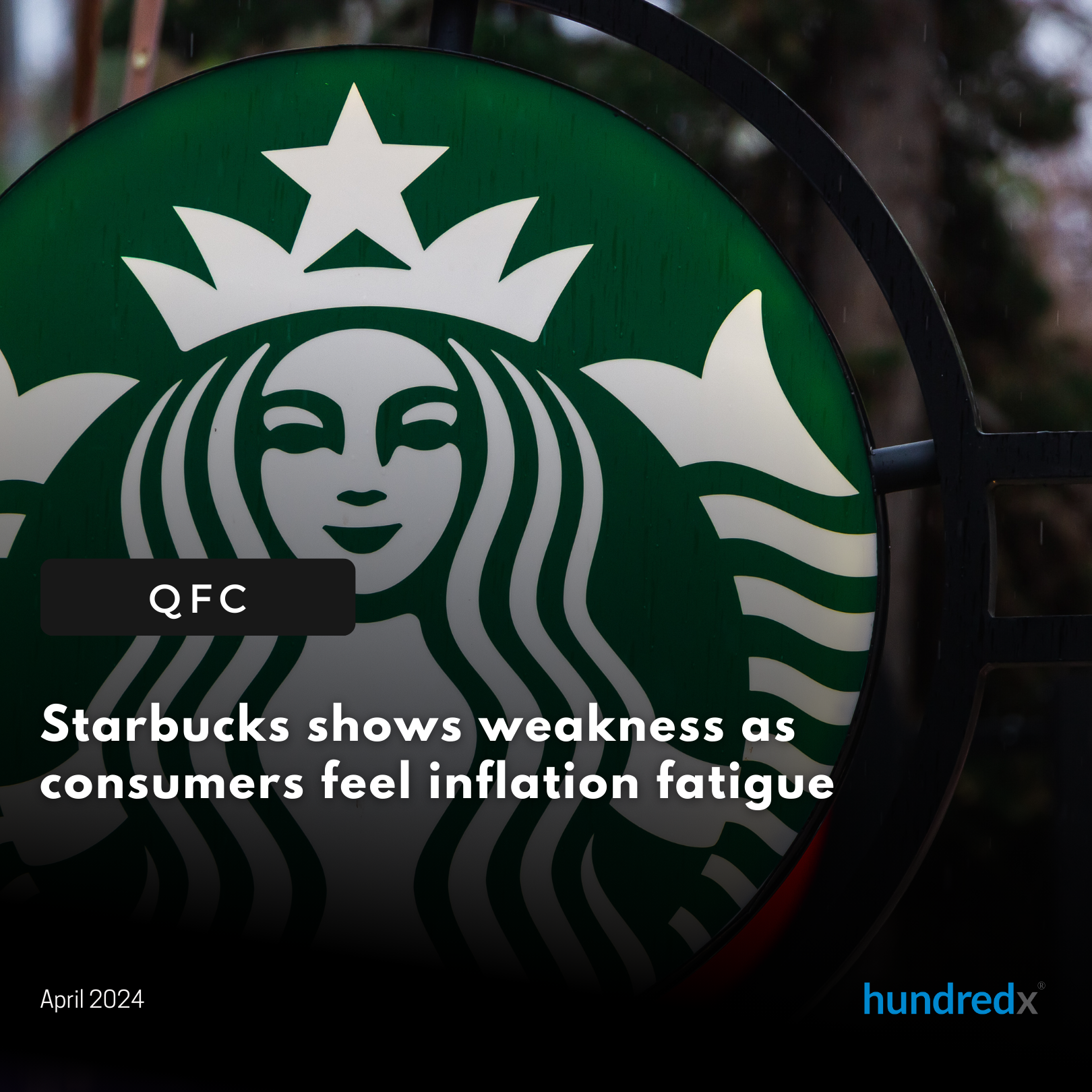
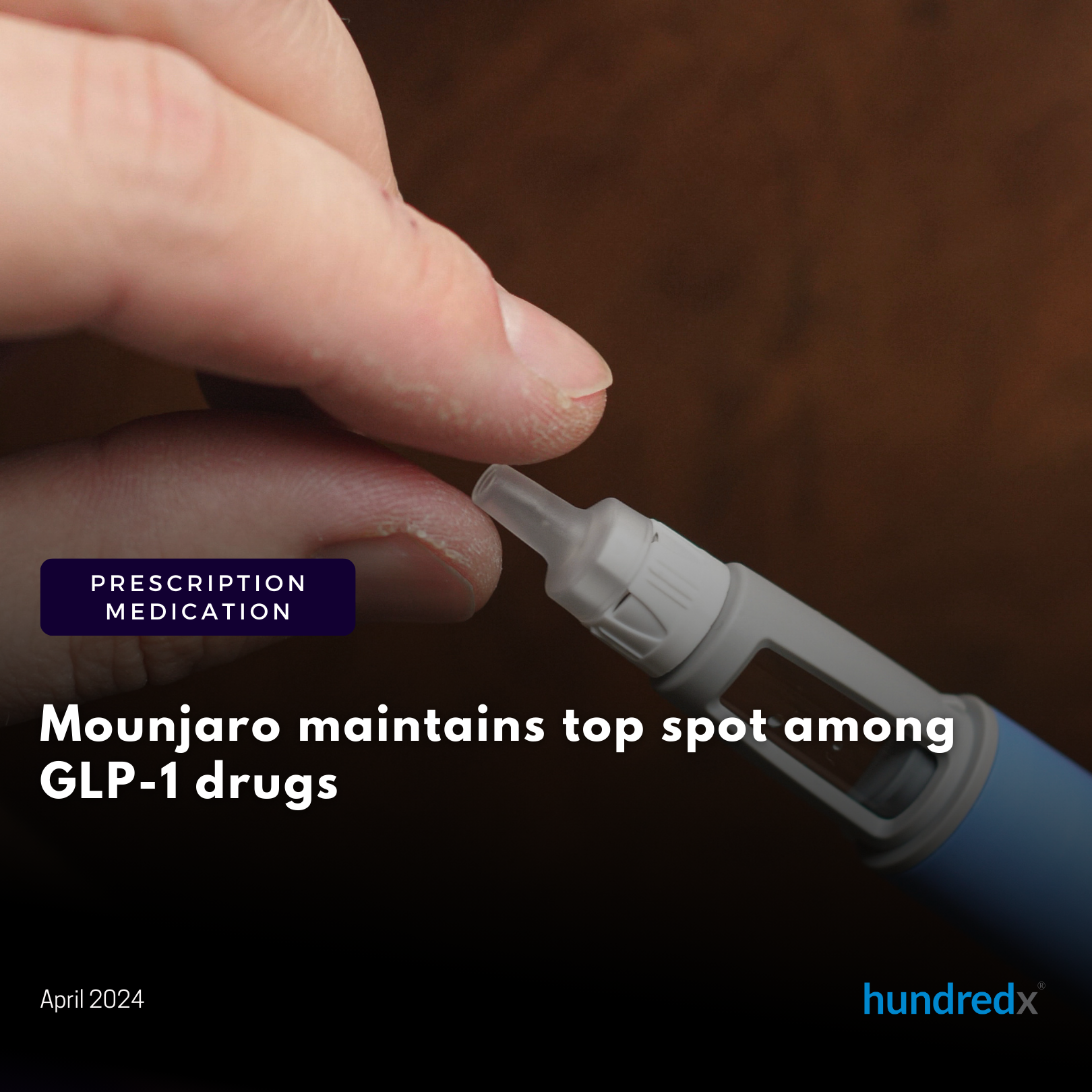
See where businesses and industries are going
All Rights Reserved | HundredX, Inc

